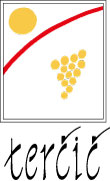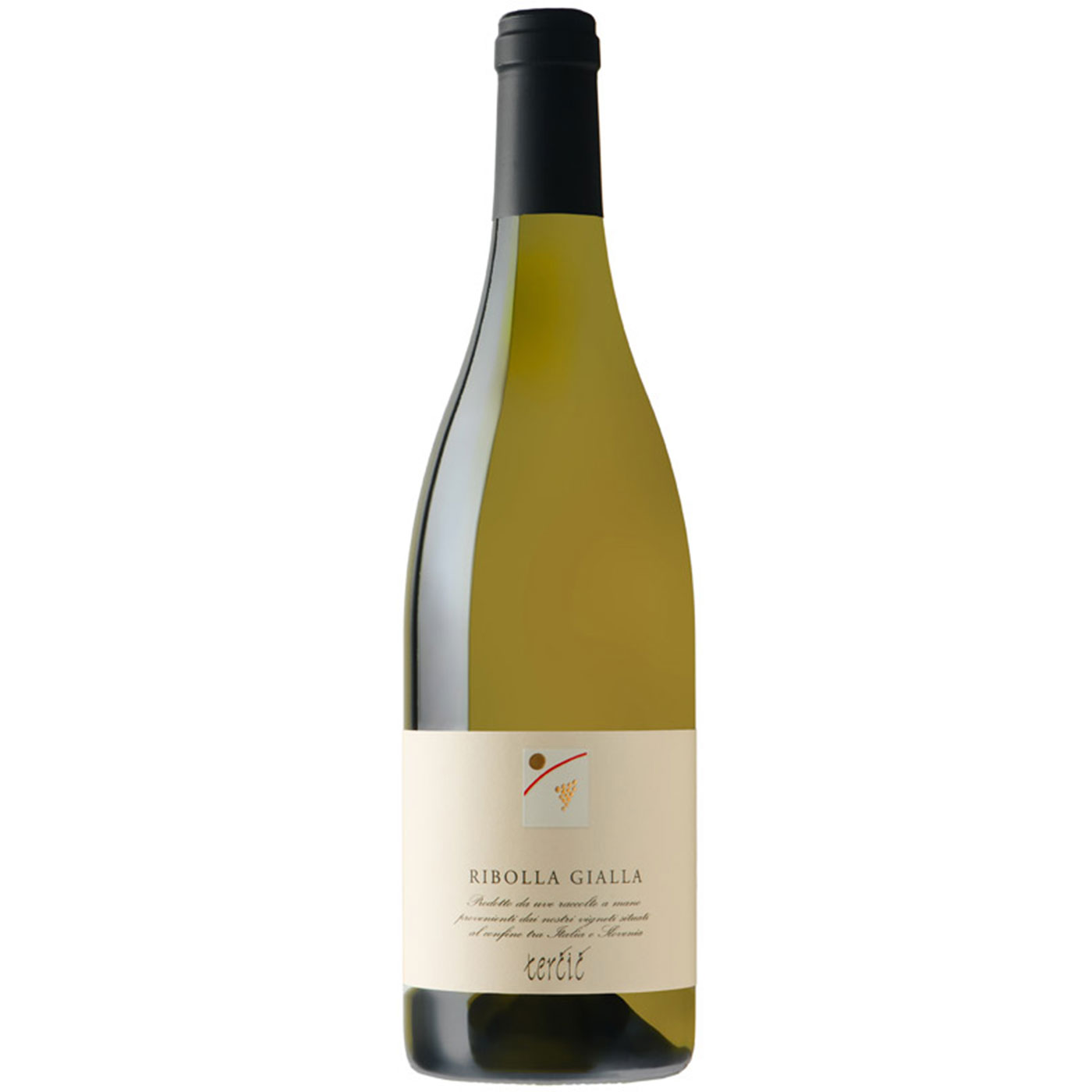RIBOLLA GIALLA
2023 | Venezia Giulia IGT
Category: white, dry
Grapes: Ribolla Gialla
Location: San Floriano del Collio
Viticultural area: Collio Goriziano
VINEYARD
Soil profile: stratified Eocene marl and sandstone
Training method: double-arched and guyot
Average vine density: 3.000/5.500 vines /ha
Average planting age: 31 years
Harvest period: second half of September
VINIFICATION
De-stemming-crushing
Pre-fermentation cold maceration: 8°-10° C
Pre-fermentation cold settling
Fermentation: 16°-20° C
Yeast: selected
Malolactic fermentation: not made
Maturation: 9 months on the lees
Clarification: gravity settling
Bottling: 28th June 2024
Bottle-ageing: 3 months
TECHNICAL DATA
Alcohol:13,13%
Total acidity: 5,95 g/l
pH: 3,38
Estimated peak of maturation: 4 years
Estimated cellar life: 10 years
2023 will be remembered as an unpredictable yet promising vintage, characterized by wines of great interest due to the balance between freshness and aromatic potential. An alternation of warm and rainy periods challenged vineyard management, but the careful attention given to the vines allowed their characteristics to be fully expressed. Unlike 2022, which was defined by a hot and dry climate that promoted uniform ripening, 2023 experienced significant meteorological events that influenced the vine’s vegetative cycle without compromising quality.
Winter recorded above-average temperatures, with a mild January and average precipitation. In contrast, February saw a drastic reduction in rainfall and slightly lower temperatures compared to the past decade, slowing the vine’s vegetative awakening. During spring, cool and warm phases alternated, accelerating the phenological cycle and leading to a rapid, uniform flowering by the end of May.
Summer was marked by variable conditions: while the season appeared very similar to previous ones until June, July brought abundant rainfall and violent storms, with hailstorms affecting the Collio and Isonzo areas, causing limited damage to vineyards facing west or northwest. August recorded above-average rainfall, accumulating greater water reserves than in recent years. These conditions slowed veraison and postponed the harvest, which began on September 7—a delay of 7–10 days compared to 2022.
In terms of production, yields were 25% lower than the previous year. However, the grapes demonstrated good quality, with a slightly lower-than-average sugar content but high acidity, ensuring balance and freshness along with excellent aromatic potential.
Vintages
2022
2022 witnessed notable shifts in weather patterns. The year began with temperature inversions and a prolonged dry period with below-average rainfall. Budding commenced around 10th April and flowering was earlier than usual, with the first blossoms already open by 19th May. Spring experienced minimal rainfall, a trend that continued through the warm, dry summer months, leading to drought in certain areas. Irrigation became necessary, especially in the plains, but nevertheless, the grapevine cycle proceeded normally, with veraison of the pinot grigio around 11th July. August and, notably September, saw rain which contributed to excellent ripening. The final quarter of the year remained dry, with minimal water supply. Grape quality was excellent, with above average sugar accumulation, and total acidity and pH in line with historical precedents. The wines present a round, intricate profile in their early years, with excellent ageing potential, particularly in the case of Merlot.
2021
January and February recorded normal temperatures and optimal rainfall, while March was drier with unstable temperatures. Lymph rise began in the middle of the month. Late frosts hit fruit trees on 7th and 8th April, but fortunately did not lead to significant damage to the vines.
Budding began towards the second half of April, starting with chardonnay, sauvignon and tocai friulano. The month of May, together with May 2019, was one of the coldest in the last 30 years, with the lowest temperatures since 1991. Flowering began in the first week of June as temperatures rose and despite low rainfall, ended quickly thanks to the good water resources of the soils. Veraison began at the end of July – beginning of August, late compared to the previous year. August presented average temperatures. The first two weeks of September were dry, and we picked a large part of the white grapes in ideal weather conditions. The last three months of the year continued dry.
Grape quality was very good, in particular for medium and medium-late ripening grapes. Acidity levels and pH remained good, thanks to the temperature excursions that characterized the lead in to the harvest.
2020
The first months of 2020 brought above-average temperatures and minimal rainfall, with the brief exception of a wet period in March. Lymph rise began irregularly, due to the drought of the winter months, towards the middle of the month. The early hours of 1st and 2nd April saw temperatures dip below 0°C across much of the valley areas, but fortunately, as many varieties had yet to sprout, no notable damage was observed and budding began with the subsequent rise in temperatures. Well-distributed rain in the months of May and June did not disturb flowering, which occurred around May 18th and lasted to the end of the month. Temperatures went up in June and veraison took place in July, earlier than the previous year. August presented average temperatures and rainfall. Our 2020 harvest started with pinot grigio on 2nd September and wrapped up on the 30th with Merlot.
The last months of the year witnessed heavy rainfall and a substantial accumulation of water resources. This vintage is remembered for the superior quality of the grapes, which had excellent sugar-acid balance and captivating aromatic expression. The wines exhibit freshness and elegance in their initial stages, and promise exceptional ageing potential.
2019
The months of January and February witnessed sparse rainfall and above-average temperatures, while the arrival of spring brought in cold and rain. Lymph rise began in mid-March and due to drought was slightly delayed and irregular. Bud break, on the other hand, commenced in early April, ahead of the norm. May brought chilly weather with abundant rain, while June saw temperatures soaring past 30 degrees, leading to exceptionally swift flowering. Veraison began towards the end of July, which together with August, was marked by scorching hot days and low rainfall. Picking began in the first week of September, in fine weather which persisted well into late autumn.
Production was lower than in 2018, but quality was high, with small grape clusters making the extraction of aromatic substances particularly interesting.Wines from the 2019 vintage have remarkable elegance, with a rich complexity of aromas and an interplay of acidity and salinity which adds depth and character on the palate.
2018
The 2018 vintage had a promising start, with temperatures above average during bud break. Rising temperatures from mid-April onwards led to rapid vegetative growth and brief and early flowering, approximately 15 days ahead of the historical norm. Positive weather conditions from May to July were marked by evenly distributed rainfall particularly high temperatures in the month of June, critical for the growth of the berries. The first signs of veraison were observed at the beginning of July in the early zones, two weeks ahead of the historical average for the area. Record-breaking heat at the end of July and the first decade of August created ideal conditions for ripe, healthy fruit, while significant temperature excursions promoted the synthesis of essential aromatic compounds.
The 2018 vintage is also remembered for the perfect September weather, which created perfect conditions for the ripening of red grapes. From a qualitative standpoint, the 2018 vintage maintained the level of the previous one. The white wines, in particular Friulano and Sauvignon, stood out for their moderate alcohol content, balanced acidity and great aromatic expressiveness.
2017
The year 2017 unfolded with a sequence of extreme weather phenomena. From the end of winter, and notably in February and March, above average temperatures were recorded, leading to bud break approximately ten days earlier than usual. These higher temperatures persisted into early April and coincided with an absence of rain which ensured excellent bud burst and uniformity in bud development.
Later in the month, during the night between the 20th and 21st, temperatures dropped abruptly, prompting a late frost that caused considerable damage to the already advanced buds. As a result, some vineyards in the valley and in the Isonzo DOC experienced significant losses, and an imbalance emerged between the hillsides and the vines on the plain. While the higher vineyards maintained a slight lead into the harvest, those affected by the frost had delay ripening, aligning the harvest date with the seasonal average. The summer was marked by warm daytime temperatures and temperate nights, which created almost ideal conditions for optimal grape ripening and healthy fruit. Varieties such as pinot grigio and chardonnay displayed excellent ripeness, while others, particularly sauvignon and friulano, stood out for above average aromatic intensity. The wines have higher than usual pH, moderate sugar content, well-balanced acid structure and a composition rich in aromatic compounds.
2016
Despite a winter that can be considered out of the ordinary, given the deficit in rainfall and the many days of the bora wind, the vegetative awakening of the vine, the weeping, and subsequent budding occurred during periods that almost fall within the norm for the Collio area. A sudden change was triggered by the particular climatic conditions of April and May, where a rainfall restored the water deficit situation in the vineyards, without causing particular problems with downy mildew infections. However, the alternation of low and high temperatures created irregular growth of the shoots and interfered with the regular progress of the flowering phase, resulting in a delay compared to the average. This delay was eliminated with the sudden rise in temperatures from mid-June onwards; the succession of several North African anticyclones generated a hot and dry period, especially during the veraison period and almost until harvest.
The high temperatures that characterized almost the entire month of August caused excessive evapotranspiration and, in some cases, water stress in the hilltops exposed to the south. Harvest began in the first week of September with grapes that were decidedly healthy and extended over a long period.
The rains at the end of August and the sudden nighttime temperature drop have certainly improved the aromatic profile of the grapes.
2015
Winter 2015 was characterized by above-average temperatures. After two dry months, normal rainfall was recorded in March. The season began with budding in line with historical averages, although April, which was quite dry with temperatures lower than normal, led to a regular flowering at the end of May with a high fruit set. During the months of June and July, the continuation of good weather interspersed with brief precipitation greatly benefited the phenological development of the plant. Veraison began from July 18th for early varieties (Pinot Grigio and Sauvignon) and concluded with late varieties on August 8th. A strong and pronounced temperature fluctuation in August allowed for an ideal ripening of the grapes, which appeared ready for harvest from the early days of September. The 2015 vintage will be remembered as a good, consistent year, with healthy and aromatically ripe grapes. The wines exhibit good balance and strong varietal recognition with a propensity for longevity.
2014
The 2014 vintage was one of the most challenging to manage in the last quarter-century in Friuli. After a first part of the summer as hot as it was humid and rainy, copious precipitation accompanied by below-average seasonal temperatures in August and September created significant problems both from a health perspective and in achieving perfect grape ripeness. However, in our area, much more than in other wine-growing areas in Friuli Venezia Giulia, the number of wines worthy of the highest consideration is not few (particularly Friulano, Pinot Grigio, and Sauvignon and white blends). The constant ventilation enjoyed by the hills and a good part of the plain, the steep slope of some vineyards, the increase in manpower, and the determination to produce quality wines may have played a decisive role in the final results. The wines present themselves as fresh, elegant, and with the passing of years, they may even surprise us.




